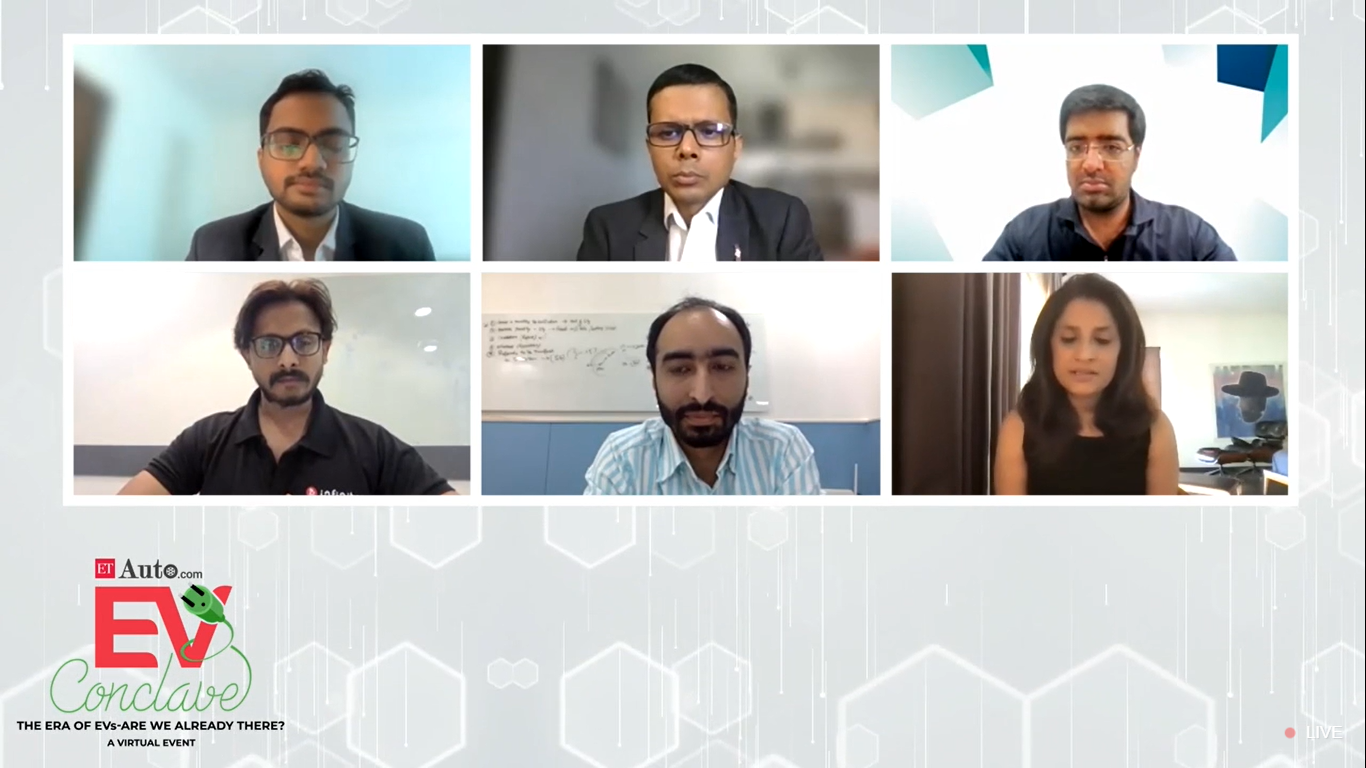
New Delhi: Along with charging infrastructure, battery swapping could play a major role in enabling the EV industry to reach a critical scale. During her Union Budget 2022-23 speech, Finance Minister Nirmala Sitharaman, said, “Considering the constraint of space in urban areas for setting up charging stations at scale, a battery swapping policy will be brought out and interoperability standards will be formulated. The private sector will be encouraged to develop sustainable and innovative business models for ‘Battery or Energy as a Service’. This will improve efficiency in the EV ecosystem.”
However, a suggestion made during the panel discussion at the ETAuto EV Conclave, which could also be an input for the battery swapping policy making, is that there should be “set contours around what is accepted as a swappable battery”, in terms of size, minimum energy density, and safety guidelines.
Battery swapping service providers gave a thumbs up to the Government’s focus on the emerging alternative to power EVs. “That was very delightful for us to hear,” said Arun Shreyas Reddy, founder, RACEenergy, a Hyderabad-based startup focusing on battery swapping and converting ICE three-wheelers to electric. However, he has some concerns about the proposed standardisation to enable interoperability of batteries.
“A fixed form factor almost restricts the technological advancements that are happening, not just with the different chemistries that are coming, but in terms of swapping as well. We’re barely getting started. I think it basically forces us to think inside the box, rather than outside the box,” he said. To support his argument, the engineer pointed out how the team at RACEenergy managed to reduce the battery pack’s volume by 50%, while increasing its energy density 20% year-on-year.
Pulkit Khurana, co-founder of Battery Smart, a Delhi based start-up which is nearing the milestone of 2 million battery swaps, also applauded the “noble thought” of battery standardisation. But he said that it may be too early for it to be in India now. “OEMs and swapping operators will agree that it’s not beneficial at this stage. All of us are experimenting on the form factors of the chemistries. OEMs have different form factors depending on the vehicle where the battery has to be connected to. Everyone is using different connectors as well,” he said.
In the emerging battery swapping market, almost all players are startups, and many of them are working on developing new solutions that may be more energy and cost efficient. Bounce, a Bengaluru based start-up which started as a two-wheeler shared mobility service, and expanded business also to electric two-wheelers and battery swapping service, is among the industry players hoping for the policy guidelines to allow room for innovation. “I’m sure everybody in the panel and many others have requested NITI Aayog not to specify something very rigid,” Anil Giri Raju, Co-founder and COO, Bounce, said. “A range of sorts for the dimension or the connectors” is what he believes would help the industry.
Sharing the OEM’s perspective, Sulajja Firodia Motwani, founder and CEO, Kinetic Green, which led the Pune based Kinetic Group’s entry into the electric three-wheeler segment a few years ago, and now the two-wheeler segment, said the standardisation for interoperability can be a “double-edged sword”.
Interoperability of batteries will help consumers, and contribute to the industry’s growth. On the other hand, it may also hamper innovation. However, in the absence of standardisation allowing interoperability, there could also be a case for any large OEM to invest in its own standard and to have a closed loop system. As an OEM, Firodia is “for interoperability, because again, as I said, we believe that this entire industry will grow through collaboration, and not by having closed loop systems again. Else we’ll go back to the same ICE era where companies with global scale are dominating the market. Why shouldn’t EV evolve as a completely different technology-based industry?”
Even as the discussion around battery swapping grows, charging infrastructure remains the most critical part of the EV industry globally. Bolt EV, a charging infrastructure provider with an installed network of over 3,000 charging points, is bullish about the demand for charging EVs with fixed batteries. Jyotiranjan Harichandran, co-founder, Bolt, said there’s a good case for battery swapping in certain segments, but consumers would look for charging options at homes or offices for their personal vehicles.
“It’s more of a personal asset also, right. So, the thing is, for the end users, when we look at it, we think charging at their own homes would be like 80-90% of the market, which is what we are also going after essentially, he said. Given an estimated volume of up to 20 million EVs in the next few years, most of them two- and three-wheelers, India may see “millions of charging points” come up in various parts of the country.
For the EV industry to gather pace, some of the panelists also shared that there’s a case for a uniform GST rates for both EVs and battery swapping/charging services. Afterall, the EV era is here, if the industry representatives are to be believed. “Two years ago, people were wondering if EVs will be the future. I think today that topic has been put to rest. Certainly, the EV train has left the station, it’s only a question of how fast it will move,” Motwani said.
Also Read:




